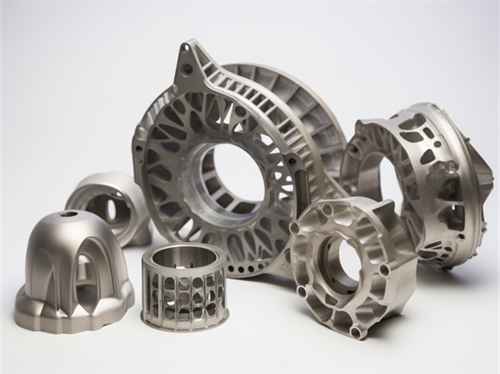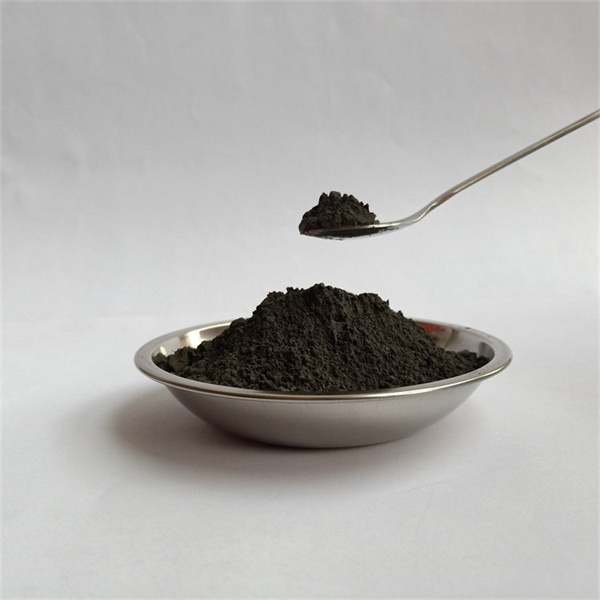选择性激光熔融概述
选择性激光熔化SLM)是一种粉末床熔融金属三维打印工艺,它使用激光选择性地逐层熔化和融合金属粉末颗粒,从而制造出完全致密的部件。
可持续土地管理技术的关键属性:
| 特征 | 说明 |
|---|---|
| 材料 | 不锈钢、钛、铝、镍合金等金属 |
| 激光类型 | 光纤、CO2 或直接二极管激光器 |
| 氛围 | 惰性氩气或氮气环境 |
| 决议 | 可精细至 150 μm |
| 准确性 | 零件尺寸在 ±0.2% 或更佳范围内 |
SLM 可为航空航天、医疗、汽车和工业应用提供复杂的可定制金属零件。
选择性激光熔融技术的工作原理
SLM 印刷工艺的工作原理如下:
- 三维模型切成二维截面图层
- 将粉末薄薄地撒在构建板上
- 激光选择性扫描层,熔化粉末
- 熔化的粉末凝固并融合在一起
- 降低建模板,在上面铺设新模板
- 重复该过程,直到建立起完整的部分
未熔化的粉末可在构建部件时提供支撑。因此,无需专门的支撑结构就能实现复杂的几何形状。

选择性激光熔化系统的类型
有几个 SLM 系统配置:
| 系统 | 详细信息 |
|---|---|
| 单激光 | 一台用于熔化的高功率激光器 |
| 多重激光 | 多个激光器可提高建造速度 |
| 扫描系统 | 振镜或固定光学镜组 |
| 金属粉末处理 | 开放式系统或封闭式粉末回收 |
| 大气控制 | 充满氩气或氮气的密封构建室 |
多激光系统可加快构建速度,而闭环粉末处理则提高了效率和可回收性。
用于选择性激光熔化的材料
SLM 常用的金属材料包括
| 材料 | 益处 |
|---|---|
| 铝合金 | 重量轻,强度高 |
| 钛合金 | 高强度重量比 |
| 不锈钢 | 耐腐蚀、高韧性 |
| 工具钢 | 高硬度和耐磨性 |
| 镍合金 | 耐高温 |
| 钴铬合金 | 具有良好的生物相容性和耐磨性 |
一系列合金粉末可满足各种应用所需的强度、硬度、耐温性和生物相容性等特性。
选择性激光熔化的应用
SLM 金属印刷的典型应用包括
| 行业 | 应用 |
|---|---|
| 航空航天 | 发动机部件、轻质结构 |
| 医疗 | 定制植入物、假肢、器械 |
| 汽车 | 轻质部件、定制工具 |
| 工业 | 轻量化组件,最终用途生产 |
| 石油和天然气 | 耐腐蚀阀门、井口部件 |
SLM 可将复杂的定制金属部件整合成一个整体,并对重量和性能进行优化。
选择性激光熔化的优点
SLM 技术的主要优势
| 益处 | 说明 |
|---|---|
| 复杂几何形状 | 有机形状的无限设计自由 |
| 部分合并 | 作为单个组件打印的组件 |
| 定制 | 易于改装以生产定制部件 |
| 轻量化 | 晶格结构和拓扑优化 |
| 节省材料 | 与减法相比,减少了浪费 |
| 后期处理 | 可能需要拆除支撑物并进行表面处理 |
这些优势使得最终使用的金属零件性能更高,交货时间更短,成本更低,产量更大。

选择性激光熔化的局限性
可持续土地管理的局限性包括
| 限制 | 说明 |
|---|---|
| 部件尺寸 | 仅限于打印机构建体积,通常低于 1 立方米 |
| 生产率 | 相对较慢的生产速度限制了大批量生产 |
| 后期处理 | 可能需要拆除支撑物、机加工、精加工 |
| 各向异性 | 机械性能因制造方向不同而异 |
| 表面处理 | 印刷后的表面相对粗糙 |
| 操作员的专业知识 | 需要丰富的打印机经验 |
该技术最适用于复杂金属零件的中低产量生产。
SLM 打印机供应商
领先的 SLM 系统制造商:
| 公司名称 | 著名系统 |
|---|---|
| EOS | EOS M 系列 |
| 3D 系统 | DMP 系列 |
| 通用电气添加剂 | X 系列 2000R |
| Trumpf | TruPrint 1000、3000 |
| SLM 解决方案 | SLM 500、SLM 800 |
| 雷尼绍 | AM500, AM400 |
从 250 x 250 x 300 毫米左右的小型设备到 800 x 400 x 500 毫米的大型系统,都能实现高生产率。
选择 SLM 3D 打印机
选择 SLM 系统时的主要考虑因素:
| 系数 | 优先权 |
|---|---|
| 建筑体积 | 与所需部件尺寸匹配 |
| 支持材料 | 所需的合金,如钛合金、铝合金、不锈钢、工具钢 |
| 惰性气体系统 | 密封、自动氩气或氮气处理 |
| 激光技术 | 光纤、CO2 或直接二极管激光器 |
| 扫描方法 | 振镜或固定镜扫描 |
| 粉末处理 | 首选闭环回收 |
最佳 SLM 系统可提供应用所需的材料、制造量、速度和粉末处理功能。
可持续土地管理设施要求
要运行 SLM 打印机,设施必须满足以下条件:
- 典型电力水平 20-60 千瓦
- 温度稳定在 20-25°C 左右
- 低于 70% 相对湿度的低湿度
- 微粒控制和金属粉末处理
- 惰性气体供应和排放
- 废气微粒过滤
- 大气监测系统
- 强有力的人员安全程序
SLM 系统需要大量的电力、冷却、粉末处理和惰性气体输送基础设施。
SLM 印刷工艺参数
典型的 SLM 印刷参数:
| 参数 | 典型范围 |
|---|---|
| 激光功率 | 100-400 W |
| 扫描速度 | 100-2000 毫米/秒 |
| 层厚度 | 20-100 μm |
| 舱口间距 | 50-200 μm |
| 斑点大小 | 50-100 μm |
| 扫描模式 | 交替进行,每层旋转 |
需要对这些参数进行精确调整,以实现每种合金粉的全致密部件。
SLM 设计指南和限制
可持续土地管理的主要设计准则包括
| 指导原则 | 原因 |
|---|---|
| 最小壁厚 | 避免热量积聚和翘曲 |
| 有支撑的悬臂 | 防止无支撑物倒塌 |
| 避免功能单薄 | 防止熔化或汽化 |
| 定向增力 | 优化负载方向 |
| 最大限度减少辅助设备的使用 | 简化后期处理 |
SLM 工艺提出了必须考虑的几何要求,如悬角和最小特征尺寸。
SLM 后处理要求
SLM 零件的常见后处理步骤:
| 过程 | 目的 |
|---|---|
| 支持移除 | 删除软件中自动生成的支持 |
| 除粉 | 清理内部通道中的剩余粉末 |
| 表面处理 | 通过机加工提高表面光洁度和粗糙度 |
| 缓解压力 | 通过热处理减少残余应力 |
| 热等静压 | 提高密度,减少内部空隙 |
后处理的程度取决于应用对公差、表面光洁度和材料特性的要求。
SLM 零件的鉴定测试
SLM 组件的典型鉴定测试:
| 测试类型 | 说明 |
|---|---|
| 密度分析 | 与锻造材料相比,测量密度 |
| 机械测试 | 拉伸、疲劳、断裂韧性测试 |
| 金相学 | 微结构成像和缺陷分析 |
| 化学分析 | 检查成分是否与规格相符 |
| 非破坏性 | CT 扫描或 X 射线检查是否有空隙 |
在投入生产应用之前,彻底的测试可确保 SLM 部件符合要求。
的好处 SLM 技术
选择性激光熔化具有关键优势:
- 铸造或数控加工无法实现的复杂有机几何形状
- 通过拓扑优化减轻结构重量
- 将部件合并为单个印刷组件
- 与减法相比,减少了浪费
- 定制和快速设计迭代
- 及时生产金属零件
- 接近锻造材料的高强度和硬度
这些优势使 SLM 适合于各行业按需生产高价值、小批量的零件。
采用 SLM 印刷的挑战
采用可持续土地管理的障碍包括
| 挑战 | 缓解策略 |
|---|---|
| 打印机成本高 | 利用服务局,验证投资回报率 |
| 材料选择 | 正在开发的新型合金,特种供应商 |
| 工艺知识 | 培训计划、学习曲线 |
| 标准 | 正在制定部件鉴定协议 |
| 后期处理 | 正在开发的自动化流程 |
随着技术的成熟,通过改进材料、设备、培训和整个行业的标准化工作,这些障碍正在减少。
选择性激光熔融技术的未来
可持续土地管理技术的新趋势:
- 500 x 500 x 500 毫米以上的较大制造体积
- 多激光系统可加快制造速度
- 膨胀合金,包括高温超合金
- 提高粉末的可回收性和处理能力
- 自动支持移除和后处理
- AM 与 CNC 相结合的混合制造
- 优化设计的专用软件
- 工艺参数和部件质量的标准化
SLM 系统将在制造尺寸、速度、材料和可靠性方面不断进步,以满足更多工业应用的生产需求。

要点概述
- SLM 利用激光选择性熔融金属粉末,实现全密度 3D 打印
- 粉末床熔融工艺可实现精细的细节和复杂的几何形状
- 适用于航空航天、医疗、汽车和工业应用
- 使用不锈钢、钛、铝和镍合金等金属
- 提供部件整合、定制和轻量化的优势
- 需要可控气氛和强大的粉末处理系统
- 可能需要对印刷部件进行大量后处理
- 适用于中低产量应用的领先技术
- 不断改进材料、构建尺寸、速度和质量
- 实现高性能印刷金属元件
选择性激光熔融作为一种按需定制金属零件的工业制造解决方案,将继续得到发展。
常见问题
| 问题 | 回答 |
|---|---|
| 哪些材料与 SLM 兼容? | 大多数可焊接合金,如不锈钢、钛、铝、工具钢、镍合金和钴铬合金。 |
| SLM 零件的典型精度是多少? | 大多数几何形状的尺寸精度可达 ±0.2% 左右。 |
| 需要进行哪些后期处理? | 常见的做法有去支撑、去粉末、表面抛光、消除应力和热等静压。 |
| 常见的 SLM 缺陷有哪些? | 气孔、开裂、层分层、翘曲、表面粗糙、未熔化颗粒。 |
| SLM 使用哪些类型的激光器? | 通常使用光纤激光器、CO2 激光器或高功率二极管。 |
